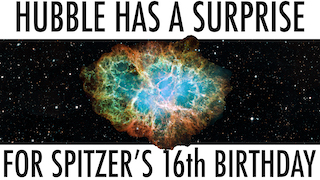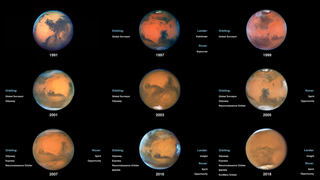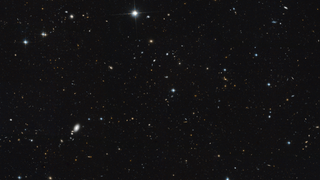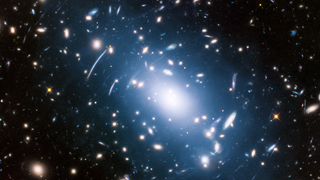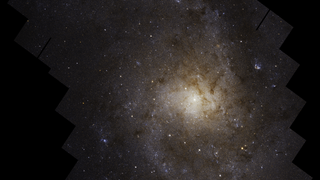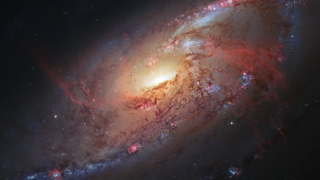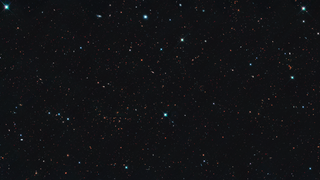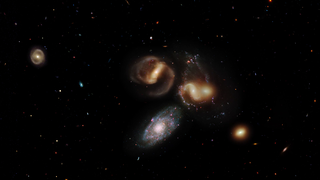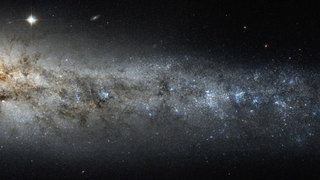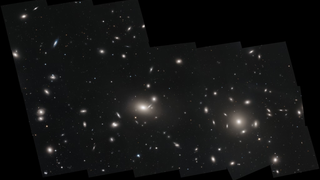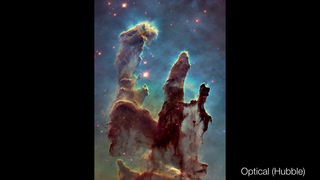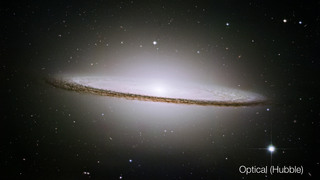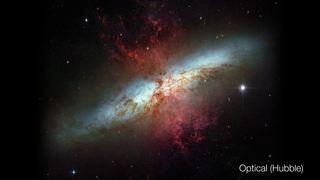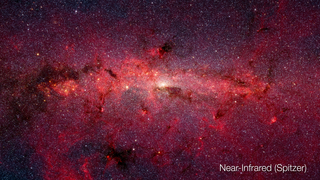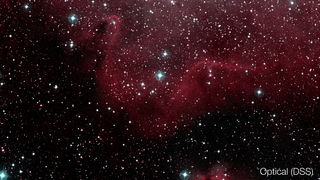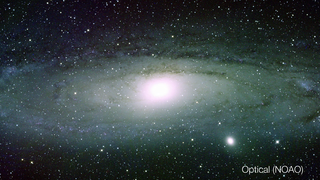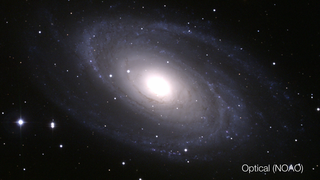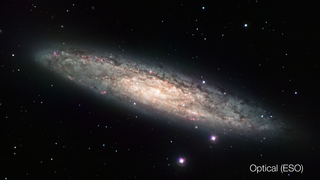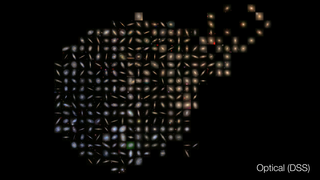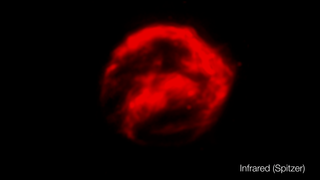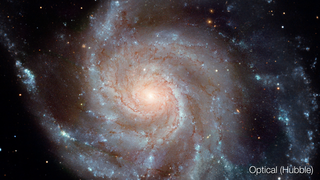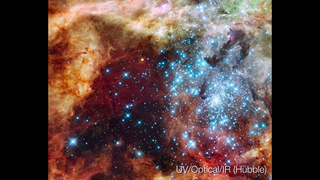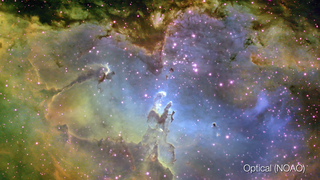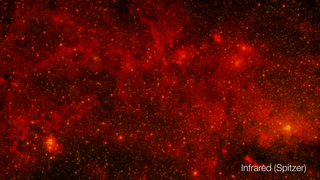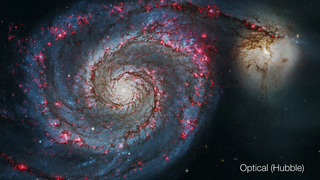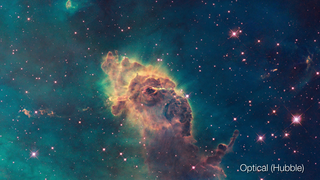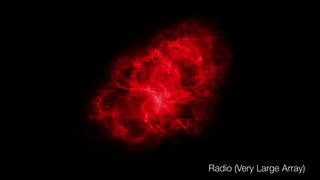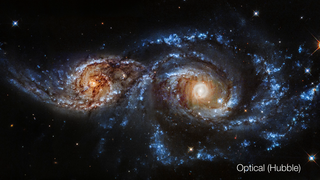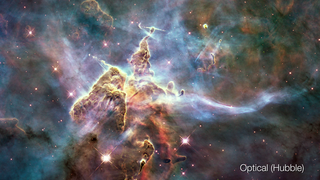Universe
ID: 30959
This sequence uses infrared (Spitzer) and visible (Hubble) images to reveal the formation of stars within a large cloud of hydrogen gas and dust. The warm gas lights up in the infrared view as red, and the hydrocarbon dust appears in green. The starlight from young stars appears in blue. The flood of starlight provides extra illumination throughout the dusty environment and in front of the cloud. The threads of gas, reminiscent of clouds on Earth, are compressed and pushed into knots by the winds from forming stars throughout the region. The clouds appear as shadows in this visible-light view. However, in areas where the gas has mostly been cleared or thinned, glowing cavities can be seen inside these cocoons. The combined view hints at the nebula’s complex three-dimensional structure.

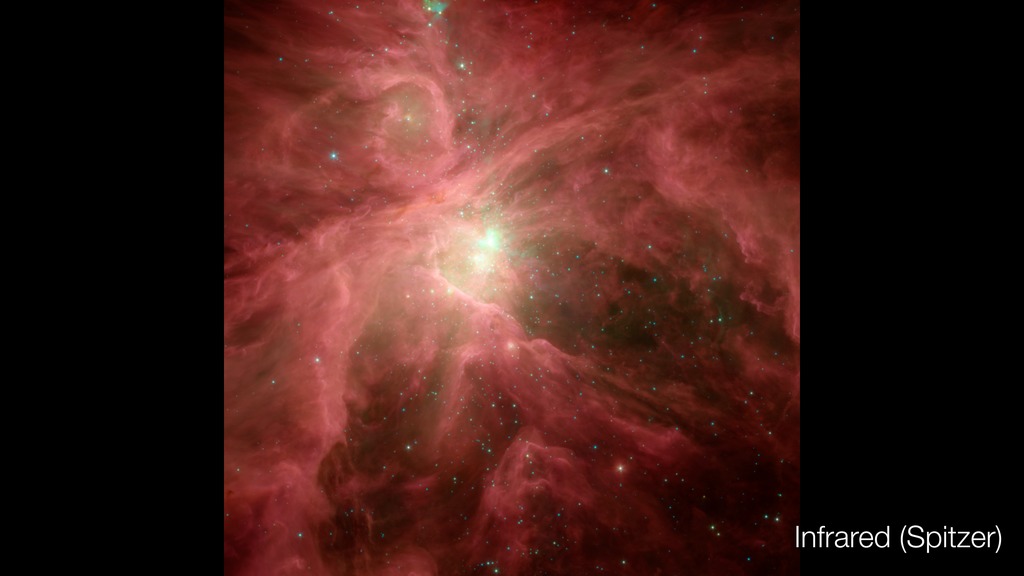
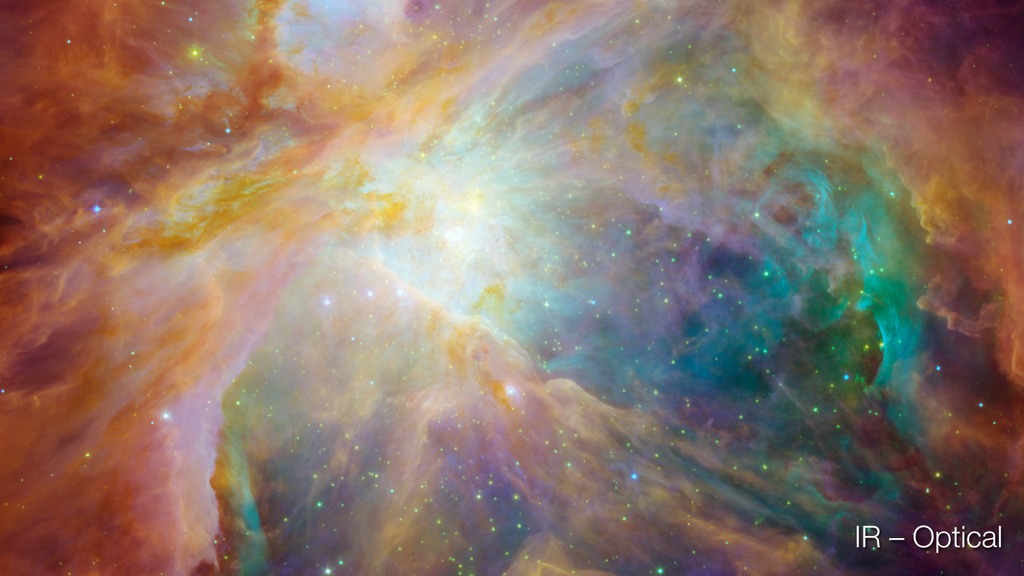
The Orion Nebula: Visible and Infrared Views



Related
Credits
Greg Bacon (STScI): Visualizer
Leann Johnson (Global Science and Technology, Inc.): Technical Support
Leann Johnson (Global Science and Technology, Inc.): Technical Support
Please give credit for this item to:
Video: NASA, ESA, and G. Bacon (STScI)
Optical image: NASA, ESA, M. Robberto (STScI/ESA) and the Hubble Space Telescope Orion Treasury Project Team (STScI)
Infrared image: NASA/Spitzer/JPL-Caltech
Video: NASA, ESA, and G. Bacon (STScI)
Optical image: NASA, ESA, M. Robberto (STScI/ESA) and the Hubble Space Telescope Orion Treasury Project Team (STScI)
Infrared image: NASA/Spitzer/JPL-Caltech
Short URL to share this page:
https://svs.gsfc.nasa.gov/30959
Missions:
Hubble
Spitzer Space Telescope
Data Used:
Note: While we identify the data sets used in these visualizations, we do not store any further details nor the data sets themselves on our site.
Keywords:
SVS >> Dust
SVS >> Gas
SVS >> HDTV
SVS >> Hydrogen
SVS >> Infrared
SVS >> Hyperwall
SVS >> Star
NASA Science >> Universe
https://svs.gsfc.nasa.gov/30959
Missions:
Hubble
Spitzer Space Telescope
Data Used:
Spitzer Space Telescope
NASA JPL/Cal TechHubble Space Telescope
Observed DataKeywords:
SVS >> Dust
SVS >> Gas
SVS >> HDTV
SVS >> Hydrogen
SVS >> Infrared
SVS >> Hyperwall
SVS >> Star
NASA Science >> Universe
